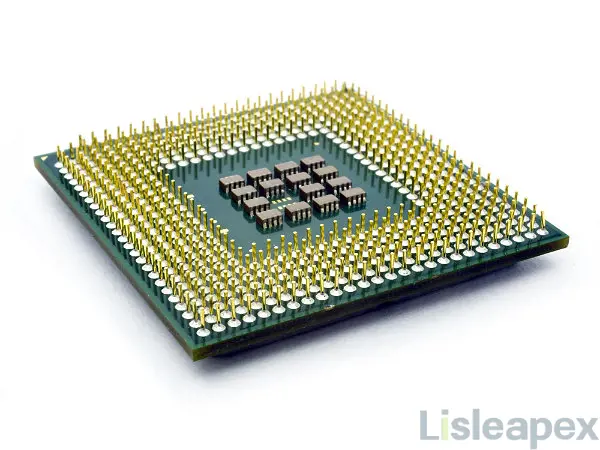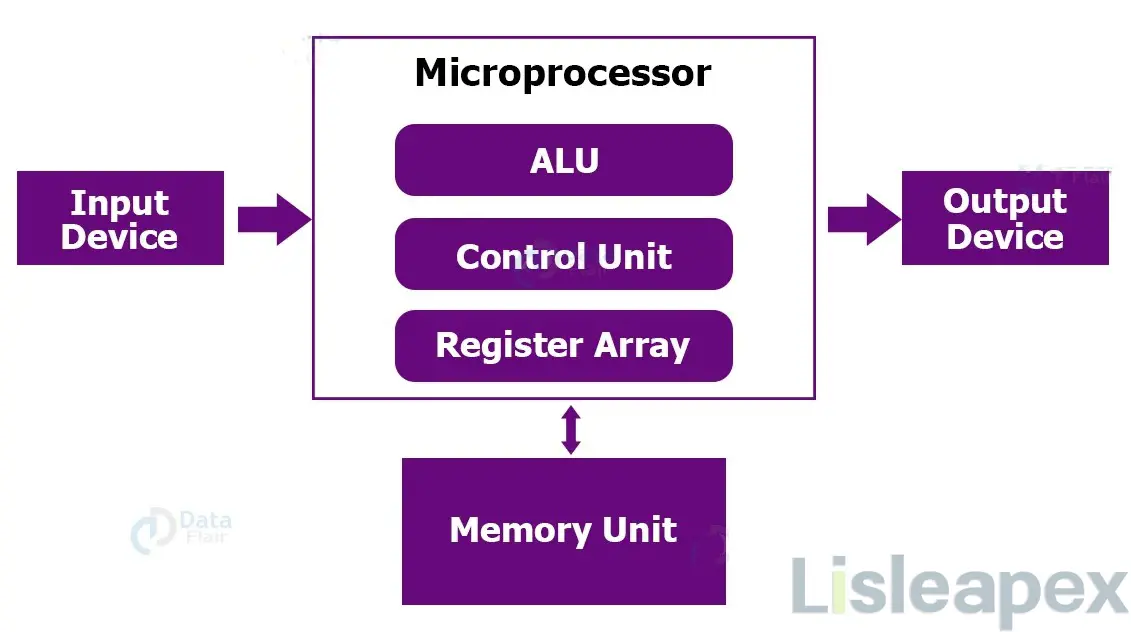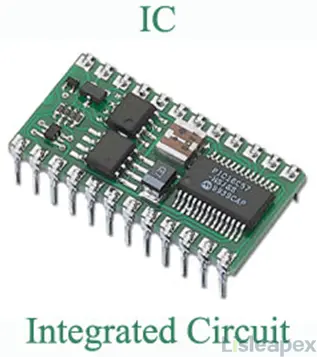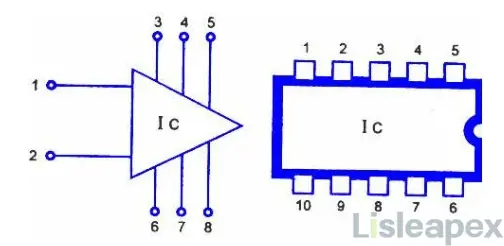In the dynamic realm of electronics, the interconnected dance of microprocessors and integrated circuits (ICs) stands as a pivotal force shaping the landscape of modern computing. Microprocessors, a specialized subset within the expansive realm of ICs, function as the computational brains driving the heart of contemporary computing devices. Simultaneously, integrated circuits, with their compact architectures housing millions of electronic components, have wrought a revolution in the way electronic systems are conceived and engineered. A deeper exploration into the nuanced distinctions and intertwined roles of microprocessors and integrated circuits reveals the depth of their impact across diverse applications, ranging from personal computers to the intricate domains of embedded systems.
What is Microprocessor
A microprocessor is a sophisticated type of integrated circuit that encapsulates the functionalities of a computer's central processing unit (CPU) within a singular chip. Serving as the computational nucleus, it executes logical and arithmetic instructions, thus orchestrating the operation of electronic circuits. This miniature yet potent electronic device has evolved significantly since its inception in the 1970s.

Initially comprised of thousands of transistors, today's microprocessors boast billions of transistors on a silicon wafer. An exemplary illustration is the AMD Epyc Rome, released in 2019, featuring over 39 billion transistors. Unlike other integrated circuits, a microprocessor functions as an intelligent entity, capable of processing diverse instructions programmed into it. It encompasses essential components such as an arithmetic and logic unit (ALU), a control unit, and a register array.
Although commonly associated with the central processing unit (CPU) of computers, microprocessors extend beyond traditional computing devices. They are integral to graphic processor units (GPUs) and fuel the rise of single-board computers, exemplified by the Raspberry Pi, in the commercial electronics landscape. Additionally, microcontrollers, combining a microprocessor with memory and I/O peripherals in a single chip, find applications in various domains.
In essence, a microprocessor serves as a compact computational powerhouse, embodying the CPU's critical functions on a single integrated circuit. Its omnipresence spans from personal computers and smartphones to diverse electronic appliances, embodying efficiency, speed, and integration with low power consumption. The evolution of microprocessors mirrors the progress of semiconductor technology, culminating in intricately designed chips housing billions of transistors and supporting a myriad of computing applications.
Block Diagram of a Microprocessor
The microprocessor comprises three essential components: the Arithmetic and Logical Unit (ALU), the Control Unit, and the Register Array. The ALU is responsible for processing data received from input devices or memory. The Control Unit manages instructions and overall system structure. The Register Array identifies and stores registers such as B, C, and the accumulator.

Main Types of microprocessor
General-Purpose Microprocessors:
General-purpose microprocessors, exemplified by the Intel Core and AMD Ryzen series, are designed to handle a broad range of computing tasks. These processors serve as the central processing unit (CPU) in desktop computers, laptops, and servers. Their versatility makes them suitable for various applications, from everyday computing to resource-intensive tasks like gaming and content creation.
Digital Signal Processors (DSPs):
Digital Signal Processors, represented by the Texas Instruments TMS320 series, specialize in the real-time processing of digital signals. They excel in applications such as audio and video processing, telecommunications, and signal analysis. DSPs are commonly integrated into devices like cell phones, digital cameras, and audio equipment to enhance and optimize signal quality.
System-on-Chip (SoC) Microprocessors:
System-on-Chip (SoC) microprocessors, including the Qualcomm Snapdragon series and Apple A-series, integrate multiple components onto a single chip. This integration includes a microprocessor core, memory, graphics processing unit (GPU), and various peripherals. SoCs are commonly used in mobile devices, tablets, and other compact electronics, offering a space-efficient and power-efficient solution.
Field-Programmable Gate Arrays (FPGAs):
Field-Programmable Gate Arrays, such as those from Xilinx and Intel, are unique microprocessors that offer configurability at the hardware level. Unlike fixed-function microprocessors, FPGAs can be programmed by users to perform specific tasks, making them highly adaptable. FPGAs find applications in digital signal processing, image processing, cryptography, and other fields where customizable hardware acceleration is beneficial. Their flexibility and reprogrammability make them suitable for prototyping and rapid development in various specialized domains.
Advantages and Disadvantages of microprocessor
Advantages of Microprocessors:
- Speedy Processing: Microprocessors can handle millions of instructions per second, making them perfect for tasks that need quick calculations.
- Small and Handy: Microprocessors are tiny, fitting easily into small gadgets like phones and smartwatches, contributing to the trend of making tech smaller and more portable.
- Energy Efficiency: Microprocessors use very little power, making them great for devices that run on batteries and promoting energy-saving designs.
- Versatile Functionality: Microprocessors can be easily reprogrammed to do different tasks, adding a lot of flexibility for various applications.
- Affordable Production: Making microprocessors is relatively cheap, which makes them a cost-effective choice for many devices, especially everyday electronics.
Disadvantages of Microprocessors:
- Limited Power: Microprocessors may not have enough power and memory for high-performance tasks, limiting their use in certain demanding applications.
- Complex Programming: Programming microprocessors can be tricky, requiring special knowledge and skills in coding and system design.
- Heat Issues: Microprocessors generate heat when they work, which can be a problem in devices where keeping things cool is a challenge.
- Security Risks: Using microprocessors can bring security concerns, as they may be vulnerable to hacking and malicious software, requiring strong measures to keep data safe.
- Quick Obsolescence: Microprocessors can become outdated fast as technology advances, leading to the need for frequent updates and replacements to keep up with changing tech standards and user needs.
Here’s a video about what microprocessor is,
What is Integrated Circuit
An integrated circuit (IC) is a semiconductor device containing millions or even billions of electronic components, such as transistors, capacitors, and resistors, all compactly built onto a single piece of semiconductor material, typically made of silicon. This compact design was first conceptualized in the 1960s as a means of reducing cost, space, and enhancing the efficiency of electronic circuits.

integrated circuit
The initial computers were constructed using vacuum tubes for logic circuits, but their large size and expensive assembly made them impractical for widespread use. The invention of the transistor marked an improvement, yet it still had limitations. The breakthrough came with the development of the integrated circuit by Jack Kilby in 1958, which revolutionized the utilization of electronic signals by condensing them into smaller, more economically viable designs.
Today, ICs are integral to embedded systems design, replacing the previous practice of wiring individual components like transistors and resistors on circuit boards. These semiconductor wafers, commonly made of silicon, integrate various electronic circuits to perform specific functions. Depending on their computing power, a single integrated circuit can house thousands to millions of electronic components.
Integrated circuits find extensive use in electronics design and are categorized as analog, digital, or a combination of both. They serve diverse purposes, including amplifiers, video processors, computer memory, switches, and microprocessors, contributing significantly to the advancement and miniaturization of electronic devices.
Different Types of integrated circuit
Integrated circuits (ICs) come in various types, each designed for specific functions and applications. Here are some common types of integrated circuits:
Analog Integrated Circuits (ICs):
- Operational Amplifiers (Op-Amps): Used for amplifying and processing analog signals.
- Voltage Regulators: Maintain a stable voltage output.
- Comparators: Compare two analog voltage signals.
- Analog-to-Digital Converters (ADC): Convert analog signals to digital signals.
Digital Integrated Circuits (ICs):
- Microprocessors: Central processing units for general-purpose computing.
- Microcontrollers: Integrated circuits with a processor, memory, and input/output peripherals for specific applications.
- Digital Signal Processors (DSP): Specialized for processing digital signals like audio and video.
- Field-Programmable Gate Arrays (FPGA): Configurable digital circuits for specific applications.
Mixed-Signal Integrated Circuits:
- Combine both analog and digital circuitry on the same chip.
- Used in applications where analog and digital signals need to interact.
Memory ICs:
- Random Access Memory (RAM): Volatile memory for temporary data storage.
- Read-Only Memory (ROM): Non-volatile memory for permanent data storage.
- Flash Memory: Non-volatile memory used in storage devices like USB drives and memory cards.
Linear ICs:
- Include amplifiers, oscillators, voltage regulators, and other linear components.
- Used in applications where the relationship between input and output signals is linear.
Radio-Frequency Integrated Circuits (RFICs):
Designed for wireless communication applications, including radios and transceivers.
Power Management ICs:
- Control and manage power distribution within electronic devices.
- Includes voltage regulators, power amplifiers, and battery management circuits.
Interface ICs:
- Facilitate communication between different components or systems.
- Examples include UART (Universal Asynchronous Receiver-Transmitter) and I2C (Inter-Integrated Circuit) interfaces.
Sensor ICs:
Include various sensors like temperature sensors, accelerometers, and gyroscopes integrated into a single chip.
Display Driver ICs:
Control and drive display technologies such as LCDs or LEDs.
How are Integrated Circuits Made?
The fabrication of integrated circuits initiates with a foundational compound element, typically silicon, undergoing chemical treatment or doping to induce distinct electrical properties. This meticulously controlled process lays the groundwork for the creation of memory or processor chips for computers.

Integrated Circuit Symbol
Here’s the video,
How Does an Integrated Circuit Work?
The operation of an integrated circuit (IC) mirrors that of devices such as amplifiers, timers, microprocessors, oscillators, and computer memory. Comprised predominantly of silicon, an IC constitutes a diminutive wafer housing numerous components including resistors, transistors, and capacitors. These minute elements are adept at performing diverse calculations, facilitating data storage through both analog and digital technologies.
Digital integrated circuits employ logic gates, operating on binary values of zero and one. A low signal within a digital IC corresponds to a zero value, while a high signal corresponds to a one. Digital ICs are commonly found in consumer electronics, networking equipment, and computers.
Conversely, various integrated circuits, such as analog circuits, operate with continuous values. In linear ICs, electronic components can handle a spectrum of values and produce an output corresponding to a linear function of the inputs. Linear ICs are prevalent in applications like audio and radio frequency (RF) amplification.
Advantages and Disadvantages of Integrated Circuit
Advantages of Integrated Circuits:
- Miniaturization: Drastically reduces the size and weight of electronic devices.
- Cost-Effectiveness: Mass production lowers per-unit costs, enhancing affordability.
- Reliability: Fewer interconnections enhance overall reliability.
- Power Efficiency: Can be designed for efficient power consumption.
- Performance: Faster signal propagation leads to improved overall device performance.
Disadvantages of Integrated Circuits:
- Complex Design: The design and fabrication of integrated circuits can be complex, requiring specialized knowledge and tools.
- High Initial Cost: Developing the initial mask and production setup can be expensive, posing challenges for smaller-scale production.
- Rapid Technological Obsolescence: Due to rapid technological advancements, integrated circuits can become obsolete quickly, leading to a shorter lifespan for devices.
- Limited Repairability: If a component on the integrated circuit fails, it is often challenging or impossible to repair or replace the specific component, necessitating the replacement of the entire chip.
- Heat Generation: Some integrated circuits generate heat, and effective heat dissipation mechanisms may be required to prevent overheating.
Microprocessor vs. Integrated Circuit: Uses
Microprocessors and integrated circuits (ICs) serve distinct but interconnected roles in the field of electronics. Let's delve into their specific uses:
Integrated Circuit (IC):
|
Application |
Description |
|
Logic Gates |
Building blocks of digital circuits, fundamental for computing and signal processing. |
|
Amplifiers |
Used for amplifying analog signals in audio applications, instrumentation, etc. |
|
Memory ICs |
Crucial for memory storage, including RAM and ROM in computers and electronic devices. |
|
Microcontrollers |
ICs with embedded processors and peripherals, used in embedded systems and appliances. |
|
ADC and DAC |
Convert signals between analog and digital formats, essential in communication systems. |
|
Sensors |
Integrated into sensors for measuring physical quantities in various applications. |
|
Voltage Regulators |
Regulate and stabilize voltage, ensuring a consistent power supply for electronic circuits. |
|
RFICs |
Specialized ICs for wireless communication in mobile devices, Wi-Fi, and other systems. |
Microprocessor:
|
Application |
Description |
|
Central Processing Unit (CPU) |
The core of computers and intelligent devices, executing arithmetic and logic operations. |
|
Computing Tasks |
Performs arithmetic and logic operations, processes instructions, and manages data flow. |
|
Control Unit |
Manages and coordinates the execution of instructions within the microprocessor. |
|
Embedded Systems |
Used in microcontroller units (MCUs) for controlling functions in appliances and automation. |
|
Signal Processing |
Employed in digital signal processing (DSP) for tasks like audio and image processing. |
|
Networking Devices |
Integral components in routers, switches, and network devices, contributing to data processing. |
|
Personal Computers |
The heart of personal computers, laptops, and workstations, executing various computing tasks. |
Microprocessor vs. Integrated Circuit: Circuit Design
When engaging in electronics design, it is essential to distinguish between working with integrated circuits (ICs) and microprocessors, emphasizing the critical aspect of speed in the latter.
While typical ICs, such as differential transceivers or logic gates, may tolerate the omission of certain best practices in PCB design, assuming a similar approach with a microprocessor is a misconception. Microprocessors, known for their power-intensive nature, typically operate within the range of hundreds of Hertz to Gigahertz.
Unlike passive ICs, microprocessors demand meticulous attention to power supply stability and voltage sensitivity. Even slight variations or abrupt drops in voltage can significantly impact the microprocessor's stability. The potential for electromagnetic interference (EMI) is another crucial consideration, particularly as microprocessors connect with memory through high-speed data buses, making them susceptible to emitting EMI that may affect adjacent, sensitive components.
Designing with a microprocessor leaves little room for error, and leveraging appropriate PCB design and analysis software becomes imperative. Cadence OrCAD, for instance, provides support for high-speed signal simulation to identify issues early in the design phase. It also offers a comprehensive suite of tools to facilitate accurate and successful design execution from the outset.
For those seeking further insights into how Cadence addresses these challenges, our team of experts is available for consultation. Additionally, our YouTube channel features informative videos on PCB design and layout, allowing users to stay abreast of the latest advancements in our suite of design and analysis tools.
How is a Microprocessor Different From an Integrated Circuit
|
Criteria |
Microprocessor |
Integrated Circuit (IC) |
|
Definition |
A type of IC that performs computations and executes instructions. |
An assembly of electronic components and circuits on a single chip. |
|
Functionality |
Executes a program stored in memory, performing calculations and making decisions based on the program's instructions. |
Varies greatly, can include amplification, oscillation, timing, counting, and microcomputing. |
|
Complexity |
Highly complex, containing millions or billions of transistors. |
Varies from simple (a few transistors) to highly complex (millions or billions of transistors). |
|
Types |
Primarily digital, used in computing and data processing. |
Includes digital (microprocessors, memory chips, logic ICs), analog (amplifiers, oscillators), and mixed-signal ICs. |
|
Application Examples |
Personal computers, servers, smartphones, embedded systems. |
Radios, TVs, mobile phones, computers, audio equipment, industrial control systems. |
|
Customizability |
Generally not customizable after manufacture. |
Can be either fixed in functionality (ASICs) or programmable (FPGAs, CPLDs). |
|
Dependence on External Components |
Requires memory and other ICs (such as input/output devices) to function. |
May work independently or as part of a larger circuit, depending on the complexity and intended use. |
In summary, a microprocessor is a specialized type of integrated circuit designed for computations and program execution. While microprocessors are a subset of integrated circuits, the latter encompasses a broader range of functionalities and applications, from simple timers to complex systems. The table highlights key differences between the two in terms of functionality, complexity, types, application examples, customizability, and dependence on external components.
Progressing Embedded Systems: The Role of Integrated Circuits and Microprocessors
Integrated circuits have been instrumental in the evolution of advanced embedded systems, shaping the landscape of contemporary devices such as smartphones, tablets, and laptop computers. These semiconductor chips serve as the foundation for the electronic circuitry crucial to the seamless operation of these systems.
Among integrated circuits, microprocessors play a pivotal role in the realm of embedded system engineering. Engineers commonly leverage microprocessors in their designs to orchestrate central processing unit (CPU) functions within embedded systems. The microprocessor takes charge of essential tasks, including retrieving and decoding instructions from the main memory. Subsequently, it utilizes these instructions to execute arithmetic and logic operations, fostering communication with other components such as additional memory or input/output devices. This intricate process is fundamental to the efficient functioning of embedded systems, showcasing the integral role that microprocessors, as specialized integrated circuits, play in advancing the capabilities of embedded technologies.
Conclusion
In summation, the symbiotic evolution of microprocessors and integrated circuits has propelled the field of electronics into unprecedented realms of efficiency and capability. The versatility embedded within integrated circuits, spanning from analog amplifiers to digital signal processors, has empowered the miniaturization and optimization of electronic devices. Concurrently, microprocessors, with their intricately designed cores housing billions of transistors, have emerged as the central nerve center propelling the computational prowess of contemporary computing devices. As we navigate the uncharted waters of future technology, the harmonious synergy between microprocessors and integrated circuits continues to spearhead innovation, influencing the trajectory of progress in embedded systems, consumer electronics, and beyond.
FAQ
-
How does a microprocessor differ from other integrated circuits?
The key difference lies in the function. A microprocessor is designed specifically for processing instructions and managing data in a computer system. Other integrated circuits may serve different purposes, such as amplifying signals, storing data, or controlling specific functions in electronic devices.
-
Can an integrated circuit perform the same functions as a microprocessor?
It depends on the design and functionality of the integrated circuit. Some integrated circuits, like microcontrollers, may include processing capabilities similar to a microprocessor. However, not all integrated circuits are capable of general-purpose computation.
-
Can a microprocessor function without being part of an integrated circuit?
No, a microprocessor is a complex electronic component that requires integration on a semiconductor substrate. It needs the compactness and efficiency provided by an integrated circuit to perform its computational tasks.
-
What are examples of non-microprocessor integrated circuits?
Examples include operational amplifiers (op-amps), memory chips (RAM, ROM), analog-to-digital converters (ADCs), digital-to-analog converters (DACs), and various specialized circuits for specific applications.
-
Is a microprocessor an integrated circuit?
Yes, a microprocessor is a type of integrated circuit. It is a complex integrated circuit that includes the CPU, control unit, arithmetic and logic unit (ALU), and other components necessary for processing instructions in a computer.
Stay updated with Lisleapex by signing up for the newsletter


 Congratulations On Your Successful Submission
Congratulations On Your Successful Submission
 Submission Failure
Submission Failure